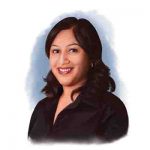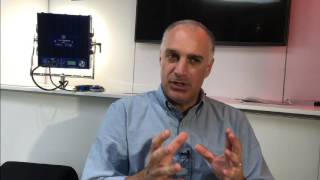BroadcastPro Middle East was given exclusive access to the much-awaited Sony FS700 camera. We partnered with Dubai-based DoP and steadicam operator Tom Lebaric to put the Sony FS700 through its paces So here it is the Sony NEX-FS700 the long-awaited big brother to the FS100. And was it worth the wait? Indeed, yes. […]
 BroadcastPro Middle East was given exclusive access to the much-awaited Sony FS700 camera. We partnered with Dubai-based DoP and steadicam operator Tom Lebaric to put the Sony FS700 through its paces
BroadcastPro Middle East was given exclusive access to the much-awaited Sony FS700 camera. We partnered with Dubai-based DoP and steadicam operator Tom Lebaric to put the Sony FS700 through its paces
So here it is the Sony NEX-FS700 the long-awaited big brother to the FS100. And was it worth the wait? Indeed, yes.
At first glance, the FS700 looks very similar to the FS100 except for a bigger snout thanks to the addition of the ND filter wheel with ¼ (2 stops), 1/16 (4 stops) and 1/64 (6 stops) options on an easy accessible switch.
This is a great add-on that the FS100 was missing. And then, the big heart-stopping attraction the 4K Exmor Super 35 CMOS image sensor in the FS700 is a massive upgrade over the CMOS chip featured in the FS100 and includes 11.6 megapixels with high sensitivity and high signal-to-noise ratio.
The 11.6MP gives almost three-and-a-half times more resolution than the FS100 at 4352×2662. The 11.6MP sensor can deliver a richer image with finer details and you can obtain a wider range of colour of the AVCHD files it records. The internal recording is still 4:2:0 though.
The rest of the controls and connections are in the same location as the FS100 except they are bigger, making it easier to find without groping in the dark. There is also a tape measure hook and hold switch feature that prevents accidental changes to the setting while shooting.
Now, lets look at the lens. The lens supplied with the FS700 is the Sony 18~200 mm 11x zoom (optical) F3.5 6.3. This will get you started but if you want to undertake more creative shooting, the FS700 comes with Sonys E-mount interchangeable lens system which means you can use it with a wide variety of Sonys NEX lenses. You can also further expand its compatibility by purchasing a lens adapter.
A mount lens adaptor for auto focus alpha lenses is an option too. A very helpful feature is the expanded focus of 4X and 8X magnification with movable area of expansion that is really helpful in those critical focusing moments.
On one of my test rounds, I tried the camera under very low light conditions and was very impressed with the amazingly low noise. For HD video, the effective pixel count is 8.4 megapixels which is sufficient to produce a 4K image, and 7.1-megapixel still images in photo mode.
The sensitivity range on the FS700 camcorder goes from 0dB (ISO 500) all the way up to 30dB (ISO 16000).
Another great feature is its four HyperGamma settings, which is the same as the F3 camcorder.
If you are one of those cameramen who travel and film a lot in different parts of the world, youll find the switchable option between 50 Hz and 60 Hz to allow 24p shooting and PAL/NTSC restrictions a great advantage for your intercontinental shoots. Clearly, this is what they call a world cam.
For recording full HD video, the NEX-FS700 uses AVCHD compression. When recording full HD, it can use 60p, 50p, 60i, 24p, 25p, or 30p frame ratesall with embedded time code and audio. It can also output full HD video directly using the 3G HD-SDI terminal with native 23.98, 25, and 29.97 progressive frame rates.
MPEG-4 AVC/H.264 AVCHD recording format works well with Avid Media Composer and Premiere Pro software, as I tried to edit the FS700 footage in both NLE systems.
Sony has worked on ergonomic improvement too, and is a noticeable change from the FS100, thus making detachable handle and grip handy. This hand grip has four buttons for quick access to its most needed controls: a focus rocker, auto aperture push, still image capture, and a start/stop record button.
Very similar to the FS100 menu, the FS700s menu system is easy and simple to navigate, featuring dedicated buttons with quick access to important controls.
The camera includes a removable shotgun microphone and two XLR inputs located near the front. The second channel XLR input is moved to the right front side of the camera to make room for a 3G-SDI link on the back. In order to access the audio control buttons, you must open the LCD panel on the back of the camcorder.
The 3.5 LCD screen (920 000 dots) is sharp and bright; it can rotate and tilt up and down. Unfortunately, it cannot tilt side to side, which is a bit of a challenge if the camera is mounted on a tripod above head level. However, an external monitor can resolve this. For shooting in bright sunlight, there is a clip on VFtube that easily attaches to the LCD. Incidentally, the monitor seems to feature touch focus and touch focus transition, like in the Epic.
The display offers video/film selections for distance (meters/feet), sensitivity (dB gain/ ISO) and shutter (speed/angle). On the left side near the back, there are a few dedicated buttons that help in assisting with exposure control, including Histogram display and Zebra patterns.
The NEX-FS700 is equipped with a single SD memory card slot that works with SDHC/SDXC memory cards as well as Sonys memory stick cards. You can record full HD video directly to the SD card, but you will not be able to record 4K video in this manner, as 4K output will only be available with the 3G HD-SDI terminal.
However, without the firmware upgrade, you can still use the SDI terminal as an HD-SDI output for uncompressed 1080p footage.
Nevertheless, the FS700 is 4K ready, and with the firmware that will be available at a later stage, it will output 4K resolution via 3G SDI connector on a dedicated external recorder. When that is ready, the FS700 will be ready to compete directly with Canons latest 4K model the EOS C500 digital cinema camera. The difference is that the Canon model costs three times more.
Being a steadicam operator myself, before even trying the famed high-speed shooting mode, I tried the camcorder on my Steadicam Flyer LE24. Although the camera was very light on my steadicam, and required extra weights to be added on, it balanced very well statically and dynamically. I was very impressed. Walking, as well as running shots were smooth and steady.
This camera also has a super slow motion filming feature, achieved by high frame rates of 240, 480 and even 960fps at lower resolutions and for the first time, we can see super slow motion filming in this price bracket.
Slow motion is not recorded in real time, however. It needs to be buffered first, and it can record around nine seconds of 240 fps footage. (Full HD 1920×1080 is only possible at 240 fps, whilst at 400 fps resolution, it is cut by half and at 800 fps, by a quarter), thus making it, in terms of image quality usable at only 240 fps.
After buffering, this footage has to be recorded to an SD card, which takes about 30 seconds. However, if you decide not to keep the clip, you can cancel it while it is being recorded to the SD card. The best thing about slow motion shooting is that you have the option to choose whether you want to record those nine seconds before, in the middle or after you press the record button, so you do not miss the action you are trying to capture in high speed.
Shooting in slow motion is great fun and I am sure that soon we will see a lot of slow motion clips around, as everyone will want to experiment with it. We hope no one overdoes it.
The FS700 seems ideal for documentaries, indie filmmakers, commercials, or B camera, if you have an F3 already.
The bottom line is that Sony has upped the ante in the market by delivering a 4K ready, super slow-mo camera in an under US $10,000 price tag and that, is a remarkable achievement. It will compete with the DSLR shooting cameras now while it can easily beat other 4K cameras that cost three times more.
Tom Lebaric is a DoP and steadicam operator based in Dubai.













































































